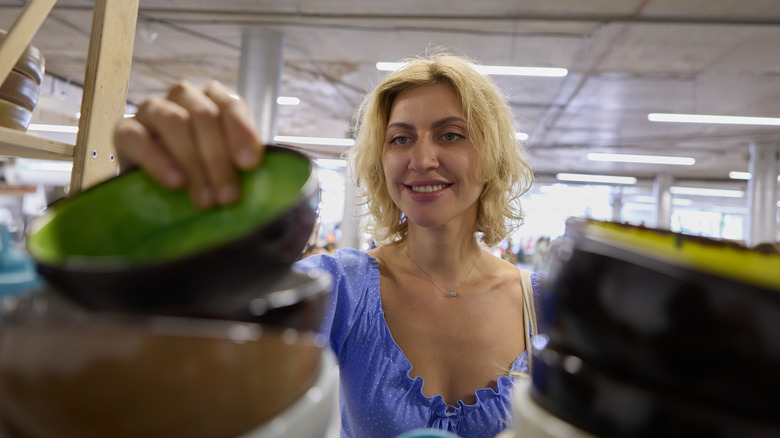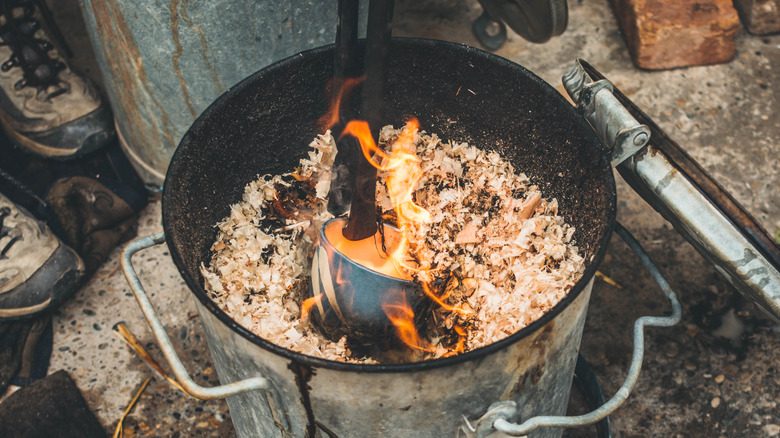How To Spot Authentic Raku Pottery At The Thrift Store
When you're thrifting for ceramic art to incorporate into your home, one type of pottery stands out among the rest: raku pottery. If you've never heard of it, raku pottery refers to an ancient Japanese ceramics technique where each piece is removed from the kiln while it's still hot and left to cool in the air or plunged into cold water, leaving the pottery pieces with unique, hard-to-replicate color patterns. Modern versions of raku pottery are also pulled from the kiln while hot, then placed in a flammable material such as sawdust. This process, which removes oxygen from the glaze, results in an unpredictable, multi-colored effect that makes each piece one of a kind.
The origins of the raku pottery technique date back hundreds of years and multiple generations to Kyoto, Japan and the Raku family. Genuine raku pieces crafted by former masters of the Raku family can be found in museums, but would be next to impossible to find at your local thrift store. Luckily, modern raku pottery is far easier to find and can be easily identified by specific glaze patterns and colors that appear metallic or iridescent. If you're hoping to find raku ceramics to decorate with pottery in your home, then knowing some general tips on how to spot this style can help.
What to look for to identify raku pottery
When you're on the hunt for raku pottery at your favorite secondhand shop, there are a few things to look for that will help you identify the pieces. First is the glazing pattern mentioned above. Authentic raku pottery commonly features uneven glazes that are blue, green, or turquoise and appear metallic. Other colors such as dark brown, light orange-red, and cream are also possible. The bottom of these pottery pieces are most commonly matte black as a result of the post-firing process that involves submerging the pieces in flammable materials.
Other signs to look out for include a bunch of tiny cracks in the glaze. This happens to raku pottery because of the dramatic change from a hot to cool environment. The authentic Japanese version of raku pottery is always thrown by hand and not on a potter's wheel, so you can also expect the pieces to have a charmingly wonky, homemade looking shape. Since raku pottery is delicate, porous, and contains metal oxides in the glaze, it is not safe to use as dishware and should be primarily used as decor. With a few styling secrets, you can make these thrifted ceramics the centerpiece in your home.

